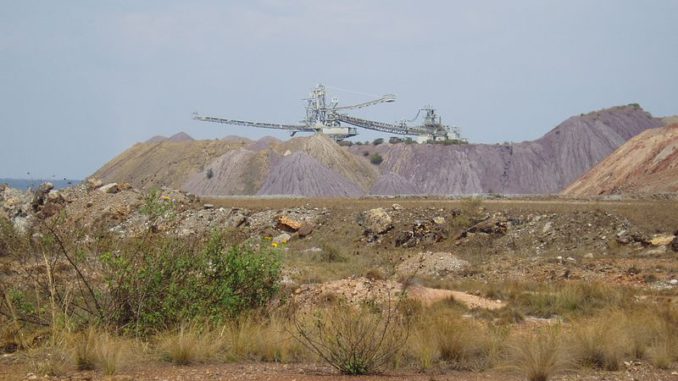
Post by Iva Peša, Research Associate in Environmental History
Large-scale copper mining has undoubtedly resulted in pervasive and enduring environmental impacts. Timothy LeCain has even asserted that copper mining caused ‘mass destruction’ of the environment (see: https://www.rutgersuniversitypress.org/mass-destruction/9780813545295). Yet these environmental impacts have rarely been the explicit focus of historical analysis. In a 2017 book, Ecology and power in the age of empire, Corey Ross argues that environmental issues were ‘a fundamental feature of the imperial past – so elemental, it would seem, as to be easily overlooked.’ (p. 4 see: https://global.oup.com/academic/product/ecology-and-power-in-the-age-of-empire-9780199590414?cc=gb&lang=en&) Part of my work is to make the environmental impacts of copper mining in the Zambian and Congolese Copperbelt visible. The period on which I focus is the 1950s-1990s, when mining operations neither generated nor were subject to explicit environmental protest movements. The conventional narrative asserts that economic considerations were so important as to trump any concerns over environmental pollution or the negative aspects of industrialisation and mining. In his thematic overview, Ross devotes one chapter to the environmental history of the Zambian and Congolese Copperbelt and rightly argues that, ‘although there is frustratingly little material on the effects of mining pollution during the colonial period, there are enough indices to confirm that it was extensive.’ (pp. 183-4) My project aims to dig up some of these hidden environmental impacts of mining, especially pertaining to pollution, and for this purpose I have accessed the archival documents of the Union Minière du Haut-Katanga (UMHK) and the Belgian ministry of foreign affairs (which contains the archives africaines) in Brussels.
In these archives, there are indeed very few documents that express environmental concern or even an awareness of pollution caused by mineral exploitation. One rare example is a 1931 study of water pollution in Jadotville (now Likasi) caused by metallurgical processing by the UMHK (Archives africaines, DG(1753)3). This study looks at the copper refining plants in Panda and Shituru and their effects on the Panda, Buluo, Lufira and Likasi rivers. To produce high-grade copper, tonnes of residues and waste materials had to be discharged, frequently into the surrounding rivers. Among these materials were palm oil, soda silicate and soda carbonate, maize oil, sulphuric acid, oleic acid and lime. The 1931 study identified that these materials were probably lethal to vegetation and animal life. Notwithstanding the profound effects on fishing and agriculture for up to 60 kilometres from the refining plants, the study was more concerned with whether the residues might be recovered and turned into economically profitable products (as the tailings could contain up to 5% copper matter). Instead of showing concern about agricultural and alluvial destruction, this report recommended that economic value from mining waste should be recovered by building tailings dams and employing complex chemical separation methods.
A second file from the 1970s, with ‘environment’ and ‘pollution’ in the title, was however radically different from the previous one. This time the focus was on Hoboken in Belgium where a major UMHK refining plant was located and where a lot of the Congolese copper was sent for smelting and processing. This file contained detailed reports and copious press coverage about a lead poisoning scandal in 1978. Doctors had discovered dangerous lead levels in the blood of school-aged children and heightened lung cancer risks among women. Lead poisoning can cause asthma, kidney disease, nervous system failure, permanent brain damage and in severe cases even death. Métallurgie Hoboken-Overpelt first responded that it had not known about the negative environmental impacts of its operations but, as media attention and legal charges were brought, the company changed its course and consciously started limiting pollution and emission levels. From 2000 onwards the renamed company UMICORE even tried to assert a ‘green’ image by adopting progressive technology to reduce emissions – yet as one perceptive article remarked, ‘not a comment was made on the ecological debt they incurred in places like Katanga, Congo, where they have a very long history of mining.’ (http://www.ceecec.net/case-studies/ecological-debt-environmental-justice-in-belgium/) Media coverage, popular pressure and legal charges led to a change of course among UMICORE management, but it was too little and too late to deal with the imperial legacy of copper mining and pollution in Katanga.
Of course these are only two vignettes – they in no way reflect more subtle developments in environmental consciousness. They do, however, suggest some of the ways in which ecology and power interact in an imperial context. In order to make the environmental history of copper mining visible, the political, economic and social aspects of Copperbelt society must be taken into account. This evidence also demonstrates severe environmental injustice in that the mineral production of one area (in this case Katanga) does not get acknowledged in the environmental campaigns of the consuming society (in this case Belgium). Belgian copper consumers were more concerned with their children’s health than with distant Congolese copper mineworkers, their families and their livelihoods. By looking for more cases of environmental impact and consciousness, my study hopes to reveal changing conceptions of the environment, mining and pollution on the Copperbelt. In short, it seeks to make the environment – which is everywhere yet overlooked – visible.
